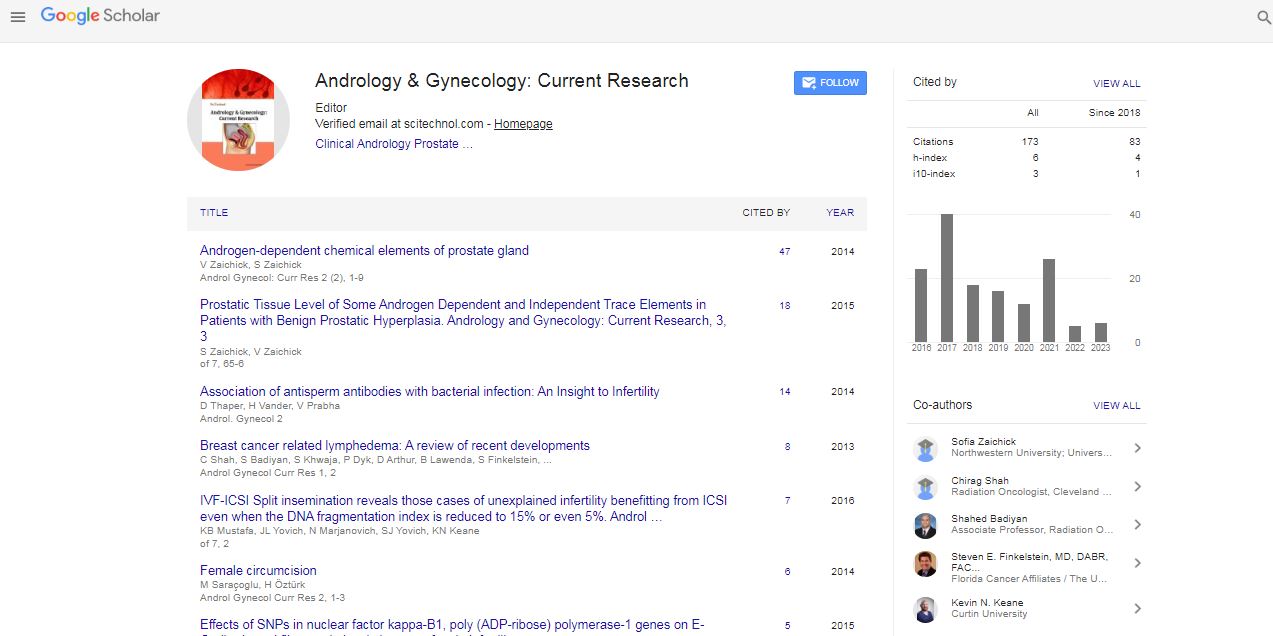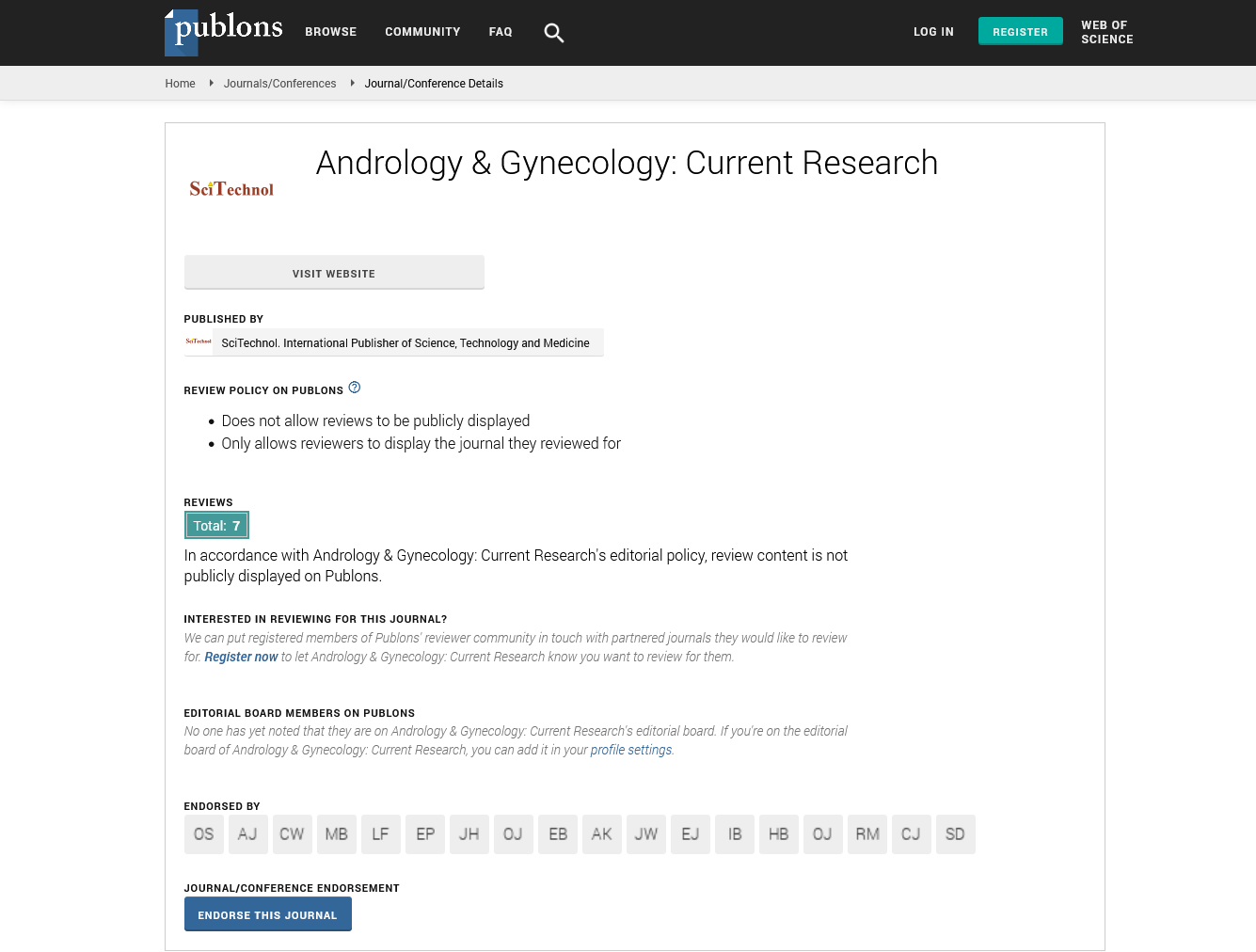Editorial, Androl Gynecol Curr Res Vol: 1 Issue: 1
Egg Banks: Moving the Concept from Wishful Thinking to Clinical Reality
| Mark V. Sauer* | |
| Division of Reproductive Endocrinology and Infertility, Columbia University, New York, USA | |
| Corresponding author : Mark V. Sauer Division of Reproductive Endocrinology and Infertility, Columbia University, New York, USA E-mail: mvs9@mail.cumc.columbia.edu |
|
| Received: June 02, 2012 Accepted: June 05, 2012 Published: June 08, 2012 | |
| Citation: Sauer MV (2012) Egg Banks: Moving the Concept from Wishful Thinking to Clinical Reality. Androl Gynecol: Curr Res 1:1. doi:10.4172/2327-4360.1000e101 |
Abstract
Egg Banks: Moving the Concept from Wishful Thinking to Clinical Reality
I believe we have entered the era of “egg banking” and it is likely that recent improvements in the method of cryobiology of female gametes will forever change the way in which we approach assisted reproduction. In my 26 years of clinical practice I have seen few innovations as significant as oocyte vitrification and the impact promises to be profound. So many times patients have mused, “Wouldn’t it be great if there were egg banks just like there are sperm banks?” I always believed that someday this would likely occur; I am just pleased that it is happening right now.
| I believe we have entered the era of “egg banking” and it is likely that recent improvements in the method of cryobiology of female gametes will forever change the way in which we approach assisted reproduction. In my 26 years of clinical practice I have seen few innovations as significant as oocyte vitrification and the impact promises to be profound. So many times patients have mused, “Wouldn’t it be great if there were egg banks just like there are sperm banks?” I always believed that someday this would likely occur; I am just pleased that it is happening right now. | |
| Theoretically, and at least preliminarily, freezing human eggs solves many problems. In places throughout the world where eggs cannot be fertilized beyond the number of embryos to be transferred, the practice of egg freezing has already become standard practice [1]. Fertility preservation programs also have been established to promote banking eggs prior to women undergoing gonad damaging cancer treatments or extirpative, fertility ending, surgery [2]. With regards to egg donation, the urgency of matching egg donors to recipients disappears; eggs can be quarantined; harvesting a large number of eggs for a single recipient, often a number well beyond which any one patient can reasonably use for herself, will not occur; and diagnostic testing on the cohort of eggs retrieved will ultimately improve selection for their use and improve treatment efficacy. These are just a few of the promised benefits. | |
| Vitrification is a process by which a liquid is solidified into a noncrystalline (glassy) phase by lowering the temperature and greatly increasing its viscosity. One of the main sources of cryogenic injury, ice crystal formation, is eliminated both within the cells being vitrified (intracellular) and the surrounding solution (extracellular). Recent prospective randomized studies have found no significant differences between fresh and vitrified oocytes regarding their in vitro and in vivo developmental capacity [3]. Vitrification is less traumatic to cells and therefore is a more effective cryopreservation technique for human embryos than the conventional slow freezing methods that hampered success in the past. | |
| A few words of caution, however, are in order. The technique is still considered experimental by the American Society for Reproductive Medicine (ASRM) and therefore routine clinical use is still discouraged, at least in the United States [4]. Despite the encouraging early clinical results, there has been no long-term follow up of the children conceived using this method. Finally, I suspect not every program has the clinical or scientific ability to perform these techniques; or at least perform them well. Yet, everyone who presently practices assisted reproduction is going to want to offer it. Perhaps vitrification and egg banking should be delegated to regional centers of excellence where patients are referred rather than trying to recreate this method in each and every IVF program. We will need to wait until the experimental label in the United States is lifted to know for sure, but I anticipate in a very short time patients may elect to freeze their own eggs, or choose to use frozen banked eggs from most IVF centers in the United States. | |
References |
|
|
 Spanish
Spanish  Chinese
Chinese  Russian
Russian  German
German  French
French  Japanese
Japanese  Portuguese
Portuguese  Hindi
Hindi 


